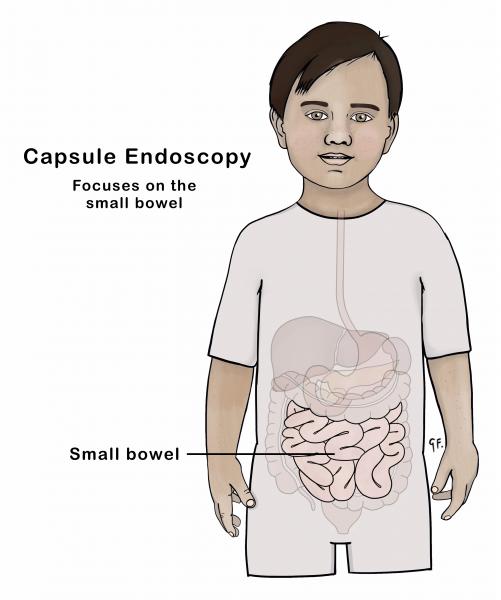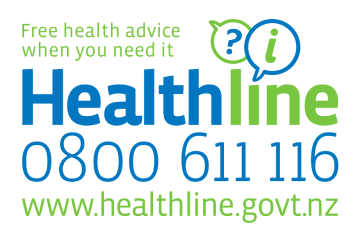Capsule Endoscopy In Children
Capsule Endoscopy In Children
A capsule endoscopy is a procedure that looks inside the digestive tract. Capsule endoscopies help doctors diagnose and monitor medical conditions. Find out more about what a capsule endoscopy involves.
Key points about a capsule endoscopy in children
- a capsule endoscopy is a procedure that looks inside the digestive tract
- it involves swallowing a capsule containing a camera, which takes images of the digestive tract
- if your child can't swallow the capsule, a gastroenterologist can put the camera into their small bowel during a gastroscopy
- your child will not be able to feel the capsule moving through their digestive tract
- capsule endoscopies help doctors diagnose and manage medical conditions
- tamariki (children) don’t usually need to stay in the hospital for this procedure
- if your child is unwell after their capsule endoscopy, take them to the hospital emergency department
What is a capsule endoscopy?
A capsule endoscopy is a procedure that looks at the digestive tract, in particular the small bowel.

A capsule endoscopy involves swallowing a small capsule that contains a special camera. The capsule is a bit bigger than a jellybean, but most tamariki can swallow it easily. The camera collects images inside the digestive tract over a time period of about 8 to 12 hours.
If tamariki can't swallow the capsule, the doctor can place the capsule in the small bowel during a gastroscopy.
See the KidsHealth page on gastroscopy for more information
Why does my child need a capsule endoscopy?
Find a cause for symptoms
The most common reason for a capsule endoscopy is to look for symptoms that may be coming from the small bowel. Your child may need to have a capsule endoscopy after a gastroscopy and colonoscopy. This is because a capsule endoscopy is the best way to look at the small bowel.
A colonoscopy and gastroscopy look at different parts of the digestive tract.
See the KidsHealth page on colonoscopy for more information
See the KidsHealth page on gastroscopy for more information
Who will oversee my child’s capsule endoscopy?
A gastroenterologist will organise the capsule endoscopy. A gastroenterologist is a doctor who specialises in the digestive system.
Is there any preparation needed before my child’s capsule endoscopy?
Bowel prep
The gastroenterologist will give you instructions on preparing your child before the procedure. Not all tamariki will need bowel prep before their capsule endoscopy. Bowel prep is a solution that clears out the digestive tract so the doctor can get a clear view.
Fasting
Your child will not be able to eat for a time period before their procedure. They can have clear fluids up to a certain time. Check their appointment letter for instructions on when they need to stop eating and drinking.
Clear fluids can be seen through easily. Clear fluids and drinks include:
- water
- lemonade and lemonade ice blocks
- cordial
- clear sports drinks or oral rehydration drinks
Milk and fresh fruit juice are not clear fluids.
What will happen on the day of my child’s capsule endoscopy?
Fasting
Your child will not be able to eat for a time period before their capsule endoscopy. They can have clear fluids up to a certain time. They will also not be able to eat for a time period after they have swallowed the capsule. Your child’s doctor will discuss this with you.
Swallowing the capsule
Your child will need to swallow the capsule. The capsule is a bit bigger than a jellybean, but most tamariki can swallow it easily. A gastroenterologist can place the capsule into the small bowel during a gastroscopy if your child is unable to swallow it.
See the KidsHealth page on gastroscopy for more information
Procedure timing
Once the capsule is in the small bowel, videos of the inside of the digestive tract will be taken over about 8 to 12 hours. The images are sent to a small recording device your child can wear over their abdomen and shoulder.
After swallowing the capsule
Most tamariki can leave the hospital and do their usual activities once they have swallowed the capsule. It’s good for your child to keep active, but you may be advised to stop them from doing too much exercise that day.
Afterwards
The gastroenterologist will give you instructions on how to check if the capsule has passed. You do not need to collect the capsule from your child’s poo after the procedure. It can be flushed down the toilet.
Returning the equipment
You will need to return the recording device that your child wore back to the hospital. This will normally be the next day, but your child’s doctor or nurse will give you instructions on how and where to do this.
Results
The gastroenterologist will look at the images that were taken from the capsule camera. It can sometimes take up to a few weeks to get the results. Your child’s doctor or nurse will make a plan with you on how to follow up on these results. They may ask you to contact your child’s GP clinic after a few weeks if you haven’t had any results back.
Are there any side effects from having a capsule endoscopy?
It is possible, but unlikely, that the capsule could get stuck if there is an unexpected narrowing in the digestive tract. In some cases, your child’s doctor may do a test run first with a special type of capsule that dissolves. This way, they can check for narrowings before using the real capsule camera.
It is unlikely, but if the capsule camera does get stuck, it could cause tummy pain and vomiting. If your child experiences any pain or vomiting after swallowing the capsule, take them to the local hospital emergency department.
This page last reviewed 16 January 2024.
Do you have any feedback for KidsHealth?
If you have any feedback about the KidsHealth website, or have a suggestion for new content, please get in touch with us.
Email us now